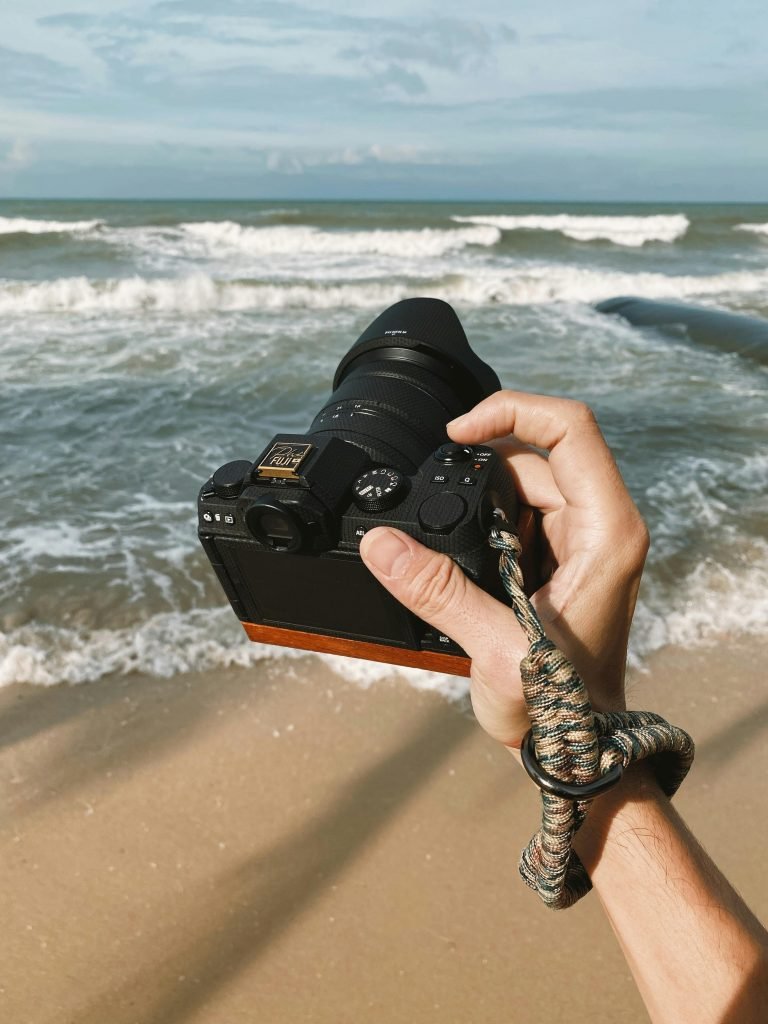In panography, changing your perspective; the angle, height, and position of the camera significantly impact the final composition. By breaking away from the typical eye-level perspective, you can add depth, emotion, and visual interest to your panoramas.
What Makes Camera Views Important in Panography?
1. Low-Angle Perspectives: Seeing the World from Below
Why Use Low Angles?
Shooting from a low vantage point can make ordinary scenes appear grand and dramatic. Think of a field of flowers stretching toward the sky or a towering monument shot from its base.
Tips for Low-Angle Panoramas
- Place your camera close to the ground using a stable tripod or even handheld.
- Experiment with wide-angle or fisheye lenses to exaggerate proportions.
- Stitch multiple images vertically to capture the full height of the subject.
Best Use Cases
- Nature Photography: Highlight the grandeur of trees, flowers, or tall grasses.
- Urban Scenes: Showcase the scale of skyscrapers from a street-level view.
2. High-Up Perspectives: Viewing Panoramas from Above
Why Shoot from High Angles?
Photographing from a high vantage point offers a sweeping overview of the scene, perfect for capturing cityscapes, mountain ranges, or expansive fields.
Tools for High Angles
- Use drones like DJI Mavic to achieve aerial shots.
- Position yourself on a high structure, such as a balcony or a hilltop.
- Pair with a panoramic tripod head for precise alignment.
Benefits
- Perspective Control: See how objects and elements interact from above.
- Unique Composition: Capture scenes that are impossible to achieve from ground level.
3. On-the-Ground Views: A Close-Up Panorama
Why Go Ground-Level?
Placing your camera directly on the ground gives a sense of immediacy and intimacy, perfect for leading lines or macro-like panoramas.
Tips
- Use a macro lens or focus on nearby subjects to enhance foreground details.
- Emphasize textures like stone, grass, or sand in the composition.
- Adjust aperture to balance foreground and background sharpness.
Popular Applications
- Travel Photography: Highlight unique textures like cobblestone streets.
- Nature Shots: Capture dew-kissed grass at sunrise.
4. Shooting from Inside Objects: A Peek into the Unusual
What Makes It Unique?
Capturing panoramas from within objects—such as tunnels, caves, or even architectural structures—creates a sense of mystery and perspective.
How to Achieve This
- Position your camera inside the object, ensuring you capture its walls or edges as framing elements.
- Use wide-angle or fisheye lenses for immersive effects.
- Experiment with lighting to create dramatic contrasts.
Creative Examples
- Caves and Arches: Showcase the interplay of light and shadow.
- Urban Frames: Use doorways, windows, or arches to frame your shot.
5. Experimenting with Lenses: Transform Your Panoramas
Wide-Angle Lenses
Wide-angle lenses are perfect for capturing expansive scenes, whether horizontal or vertical panoramas. They create a natural sense of depth and proportion.
Use Cases
- Landscapes: Capture the vastness of valleys or coastlines.
- Architecture: Highlight the intricacies of large structures.
Fisheye Lenses
Fisheye lenses introduce playful distortion, bending straight lines and creating spherical effects.
Use Cases
- Artistic Shots: Add a surreal touch to mundane scenes.
- Interior Spaces: Make compact rooms appear larger and more dynamic.
Zoom Lenses
Zoom lenses let you focus on specific sections of a scene, offering tighter compositions while still maintaining a panoramic effect.
Use Cases
- Wildlife: Highlight a specific herd of animals in an open field.
- Abstract: Focus on intricate textures or patterns.
6. Combining Views: The Ultimate Panorama
The beauty of panography lies in its versatility. By combining various camera views—low angles, high perspectives, ground-level shots—you can create multi-layered compositions that tell a more comprehensive story.
Conclusion: The Sky’s the Limit
Exploring different and unusual camera views in panography can transform your photography and push the boundaries of creative expression. Whether you’re experimenting with low or high angles, capturing ground-level textures, or shooting from inside fascinating structures, these techniques will add depth and intrigue to your panoramas. Pair them with diverse lenses, and you’re on your way to creating truly inspiring images. Let these ideas ignite your Panography Inspiration, and start viewing the world from new, exciting perspectives today.


